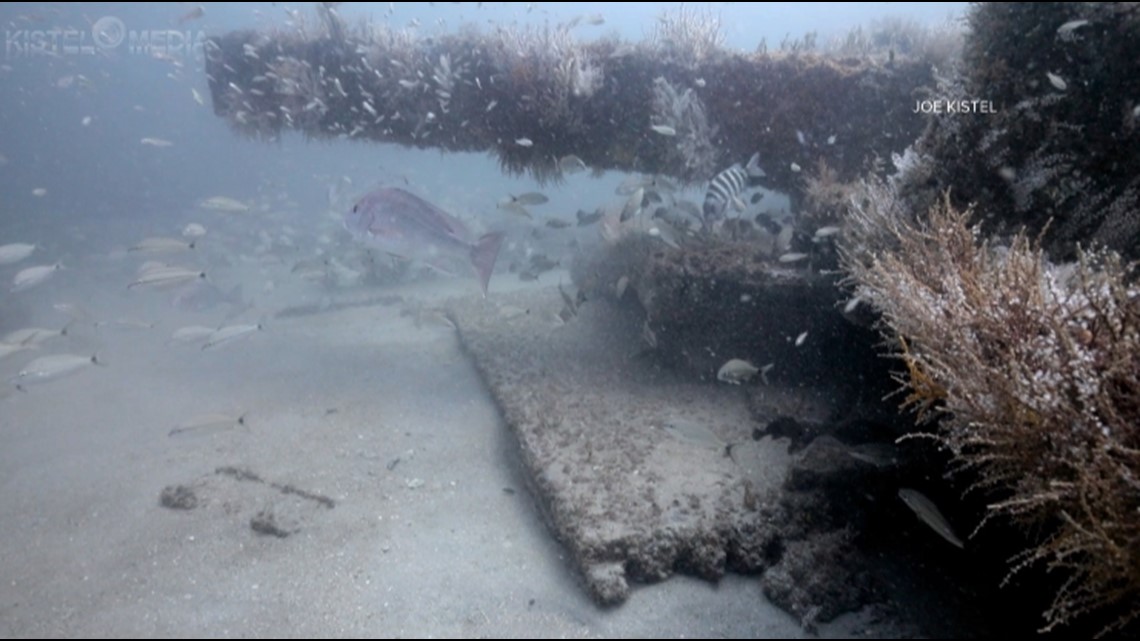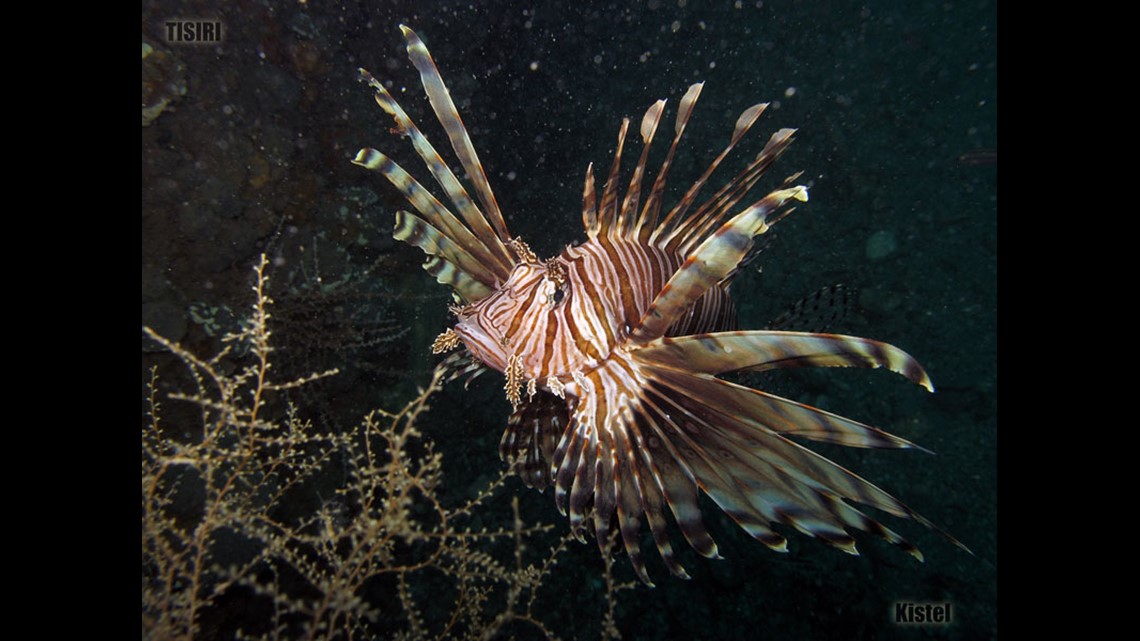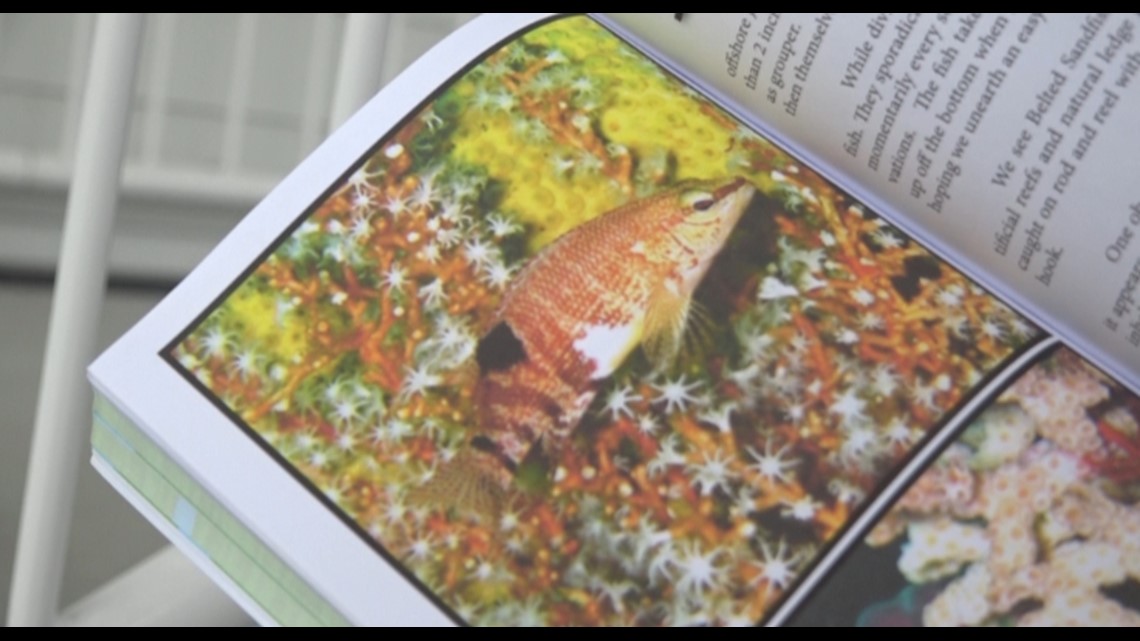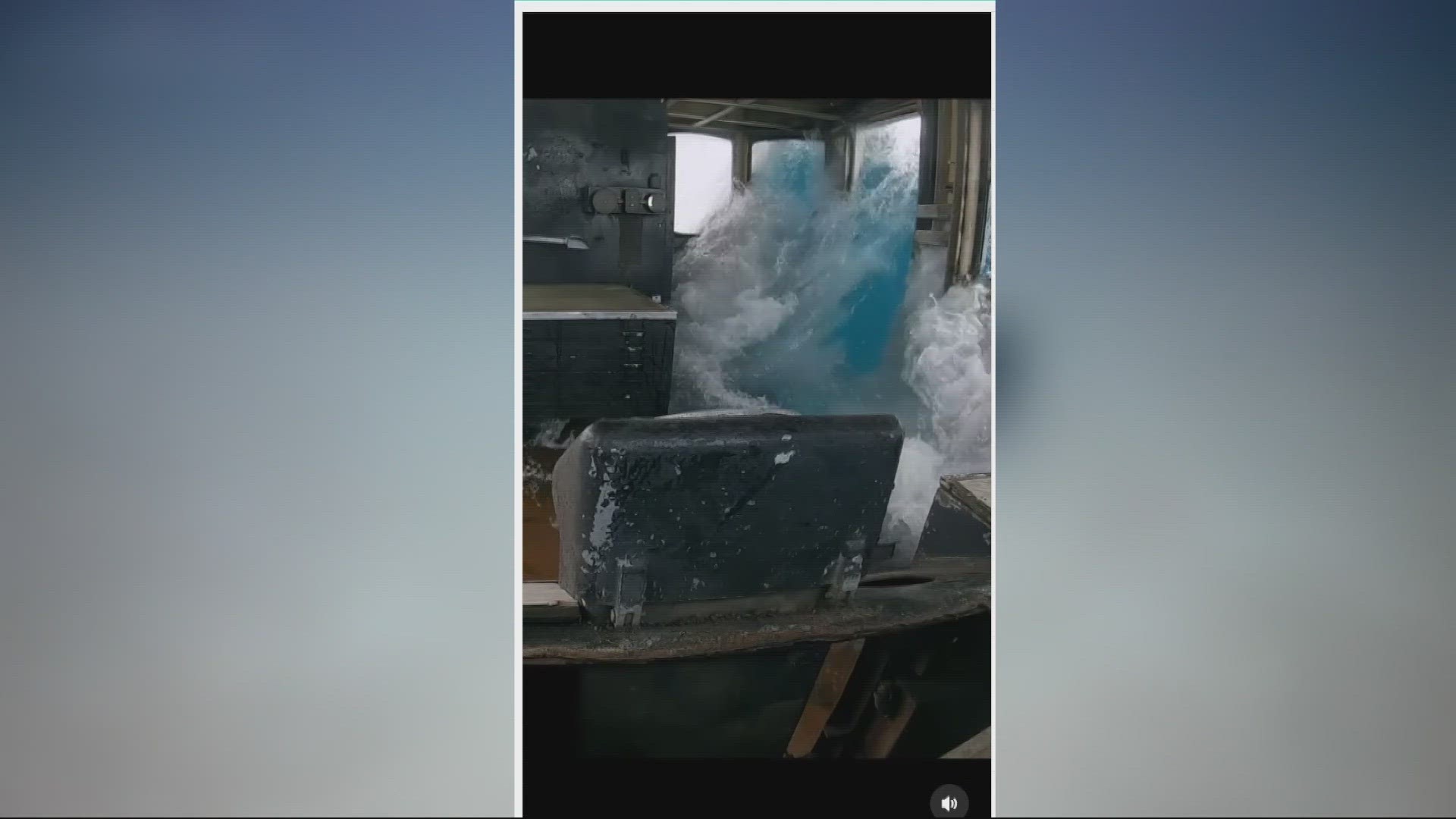JACKSONVILLE, Fla. — Videos of two sinking ships off the coast of Jacksonville have since gone viral.
They intentionally hit the ocean floor two years ago, and are now artificial reefs. The videos are posted on social media and have been viewed more than a million times.
The videos were taken from cameras attached to the ships that capture the moments they tilt to the side and water rushes inside.
"It almost makes you feel you’re in the ship as it’s sinking," Joe Kistel nodded.
He has been sinking ships as well as other cleaned debris for years on Florida’s northeast coast. He's helped create 12 artificial reefs.
"After so many years, you get this underwater oasis that is a mecca for the marine food chain," he said.
Just last week, Kistel dived two artificial reefs that are now 8 and 5 years old.
"The amount of life on these reefs already is amazing," he said.


He saw red snapper, flounder, Goliath grouper among many other kinds of fish and marine life.
Kistel certainly has his finger on the pulse of northeast Florida’s ocean floor. And he’s noticing trends. One deals with the invasive lionfish which is known to destroy native marine life.


"Typically in northeast Florida, we find more of them in deeper waters, in water a 100-feet-deep. In more recent years, we’re seeing lionfish in shallower reefs that are 70-feet-deep," Kistel said.
He added that may indicate a natural progression of the non-native lionfish.
Another observation deals with a creature called the belted sandfish. It's a small fish. "It was very popular on our reef sites, or at least it was," Kistel noted.


Now he has noticed that where there are lionfish, there are "next to zero belted sandfish."
Kistel's gut tells him the lionfish may be devouring the belted sandfish.
"That would potentially be negative on others things. Belted sandfish could be prey for other native species," he said.
All this insight, from dropping cleaned-up ships and debris into the ocean which became fishing and diving hot spots.

